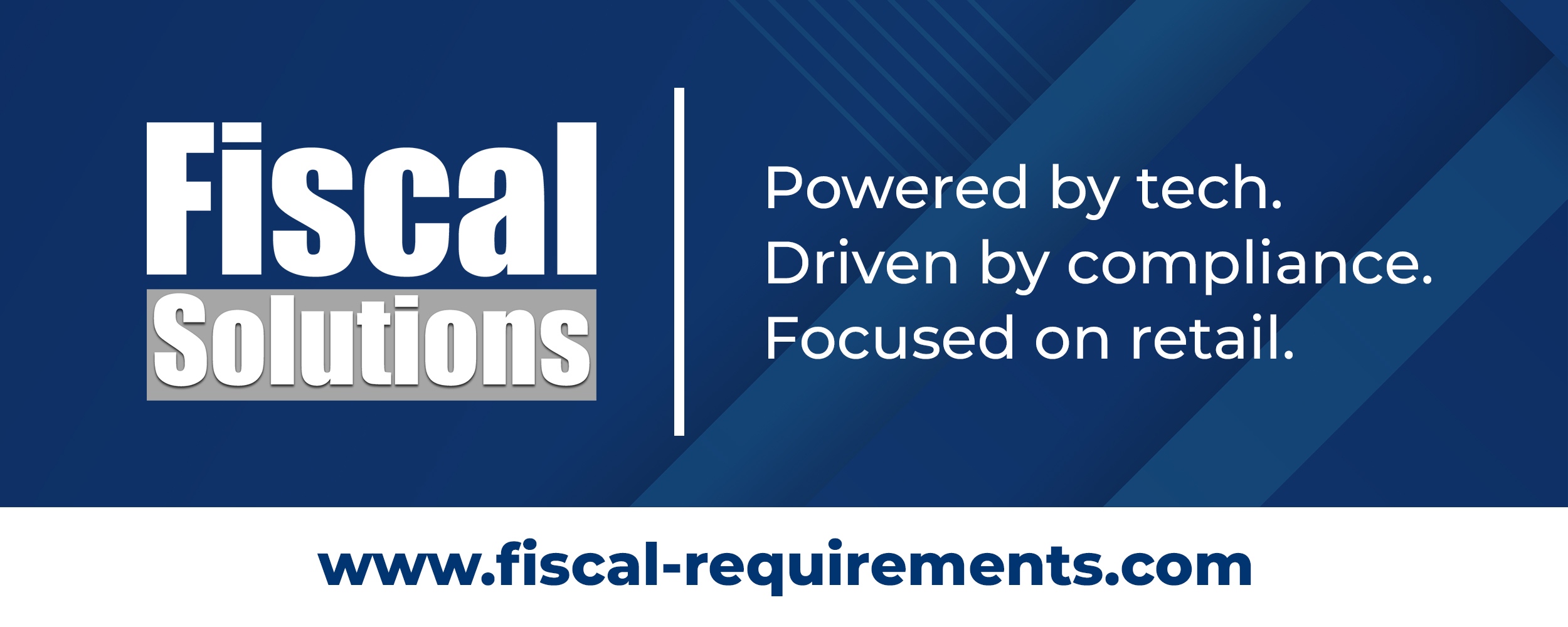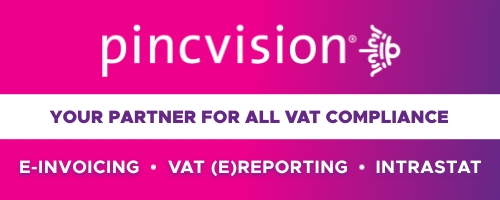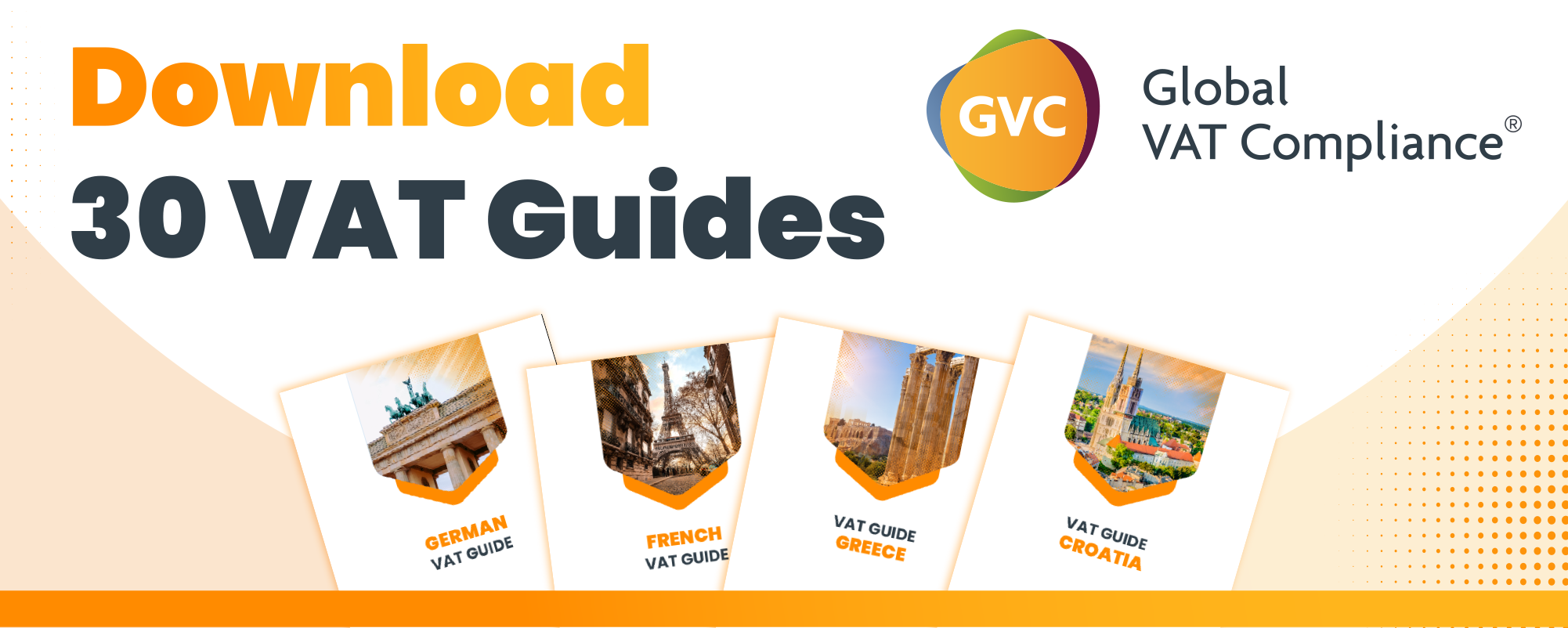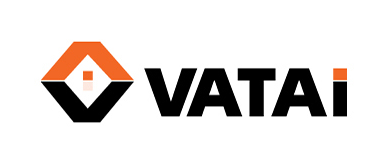1
E-commerce is subject to certain specific rules which lead to:
- to define, among deliveries of goods, a sub-category of operations qualified as distance sales of goods (VAD);
- to lay down special rules in the event of deliveries of goods facilitated by means of electronic interfaces, relating to the implementation of a special taxation scheme known as “purchase-resale”, similar to that existing for intermediation opaque ( II-B § 50 and following of BOI-TVA-CHAMP-10-10-40-40 ) as well as specific rules for designating the person liable for value added tax (VAT) when the goods are imported.
10
These special rules only apply in mainland France, excluding the territories of overseas communities, whether or not VAT applies there and whether or not these communities are governed by the treaty on the functioning of the European Union.
It follows that when this BOI refers to third-party territories, the territories of these communities are also concerned. Conversely, when reference is made to the territories of the Member States, the territories of these communities are not concerned.
For definitions of VAT application territories at national and European level, please refer to BOI-TVA-CHAMP-20-10 .
I. Distance sales of goods (VAD)
20
VAD are deliveries of specific movable property which are governed by specific territoriality rules ( BOI-TVA-CHAMP-20-20-30 ). In addition, some of them are governed by a particular taxation scheme when they are facilitated by means of an electronic interface ( II § 90 et seq .). Finally, some home delivery services may benefit from special shared declaration and payment schemes at European level ( BOI-TVA-DECLA-20-20-60 ).
II bis of article 256 of the general tax code (CGI) gives the definition of VAD by means of three cumulative conditions relating respectively to:
- shipment or transport (the good must cross a border of metropolitan France). Depending on the origin of the goods, several categories of VAD are distinguished;
- the nature of the goods delivered (all goods are concerned, except for exceptions);
- the status of the purchaser (non-taxable individuals and similar).
A. Shipping or Transportation Conditions
1. Place of departure of the shipment or transport
30
For a delivery of a good to qualify as VAD pursuant to II bis of Article 256 of the CGI , it must be made to a territory of a Member State of the European Union (EU) . In addition, the place of departure of the shipment or transport to the purchaser must be:
- or in an EU Member State other than that of arrival of the shipment or transport to the acquirer. In this case, the delivery is qualified as intra-community distance selling (VAD-IC);
Note: Exchanges of goods in overseas collectivities, between overseas collectivities and between mainland France and overseas collectivities are never qualified as VAD-IC.
- or in a third territory of the EU for VAT purposes ( II-C § 150 to 190 of BOI-TVA-CHAMP-20-10 ). In this case, the delivery is qualified as distance selling of imported goods (VAD-BI).
Note: Exchanges of goods between overseas communities and mainland France or between these communities and other Member States are likely to constitute VAD-BI ( II § 65 to 69 of BOI-TVA-GEO-20-40 ).
The place of departure of the shipment or transport means the last place before the direct routing to the purchaser. In the event of pre-positioning of goods in a warehouse, the location of the warehouse is therefore taken into account.
Example 1: A trader has inventory located in the United States. As part of its activity, it regularly pre-positions part of its stocks in warehouses located in mainland France in order to optimize delivery times for any orders. The sale of these goods from a stock located in France and destined for a final purchaser also located in France will not be qualified as VAD-BI and will follow the common law regime for internal deliveries to a Member State.
Example 2: A trader has inventory located in China. As part of its activity, it regularly pre-positions part of its stocks in warehouses located in Italy in order to optimize delivery times for any orders. The sale of these goods from a stock located in Italy and destined for an end buyer located in mainland France will be qualified as VAD-IC and not VAD-BI.
Example 3: A trader has inventory located in the UK. When the latter receives an order from a customer located in mainland France, he ships the goods from the United Kingdom directly to the buyer located in mainland France. The sale of these goods will be qualified as VAD-BI.
40
In the case of a VAD-BI, two situations are to be considered:
- so-called “ direct “ VAD-BI , when the goods are imported directly into the EU Member State of arrival of the shipment or transport of the goods (the Member State of import and the Member State of final destination of dispatch or transport are identical). For the conditions under which imports are territorialized on the territory of an EU Member State, please refer to BOI-TVA-CHAMP-20-65 .
Example 1: A shipment departing from the United States, destined for a purchaser located in mainland France and which is subject to customs clearance upon arrival at Roissy-Charles de Gaulle airport, even if he has previously transited through the territory of another Member State.
- so-called “ indirect “ VAD-BI , when the good is imported into a first EU Member State before being transported to a second EU Member State (the Member State of import and the Member State of final destination of dispatch or transport are different).
Example 2: A shipment sent from the United Kingdom, destined for a acquirer located in metropolitan France, but which would be cleared through customs in the Netherlands before being routed to the acquirer located in metropolitan France.
Note: 4 of Article 221 of Commission Implementing Regulation (EU) 2015/2447 of 24 November 2015 laying down detailed rules for the application of certain provisions of Regulation (EU) No 952/2013 of the European Parliament and of the Council establishing the Union Customs Code imposes in particular, when the taxpayer does not use the “Import One Stop Shop” (IOSS) and the value of the VAD-BI does not exceed €150, customs clearance of the goods in the EU Member State of consumption. In this sense, it limits so-called “indirect” VAD-BI to two situations:
-
shipments exceeding €150;
-
for shipments not exceeding this threshold and for which the one-stop shop called “ IOS” is used. If this window is used, imports are exempt ( III § 130 et seq. of BOI-TVA-DECLA-20-20-60-10 ).
50
These three categories of deliveries, VAD-IC, direct VAD-BI and indirect VAD-BI, follow different rules in terms of territoriality ( BOI-TVA-CHAMP-20-20-30 ) and designation of the person liable ( BOI-TVA -DECLA-10-10-20 for the general rules and BOI-TVA-DECLA-10-30 for the rules specific to e-commerce operations).
2. Methods of dispatch or transport
60
Deliveries must relate to goods which are dispatched or transported by the supplier or on his behalf to the purchaser. This condition will be deemed fulfilled when the seller intervenes directly or indirectly in the transport or shipment of the goods.
Article 5a of Council Implementing Regulation (EU) 2019/2026 of 21 November 2019 amending Implementing Regulation (EU) No 282/2011 as regards facilitated deliveries of goods or services by electronic interfaces and the special arrangements applicable to taxable persons who provide services to non-taxable persons and carry out distance sales of goods and certain domestic deliveries of goods specifies some of the situations in which goods must be considered as dispatched or transported by the supplier or on his behalf:
- when the shipment or transport of the goods is subcontracted by the supplier to a third party who delivers the goods to the purchaser;
- when the dispatch or transport of the goods is carried out by a third party, but the supplier assumes all or part of the responsibility for the delivery of the goods to the purchaser;
- when the supplier invoices the transport costs to the purchaser and collects them from the latter in order to then transfer them to a third party who will ensure the shipment or transport of the goods;
- when the supplier promotes by any means the delivery services of a third party to the purchaser, puts the purchaser in contact with a third party or communicates to a third party the information necessary for the delivery of the goods to the purchaser.
Example 1: A French consumer traveling in the United States acquires a good from a local supplier. In order to facilitate its shipment to mainland France, the supplier offers the consumer to deliver the goods directly to the traveler’s home in mainland France. This operation will be qualified as VAD.
Example 2: This same French consumer refuses the supplier’s proposal and decides to organize the transport of the acquired good to his home himself, either by transporting it in his suitcases, or by approaching a transporter. This operation will not be qualified as VAD.
B. Condition relating to the nature of the goods delivered
70
The delivery is not considered as a home delivery service:
- new means of transport;
- of goods delivered after assembly or installation, with or without commissioning test, by the supplier or on his behalf.
Note 1: On the other hand, products subject to excise duty (energy products, alcohol, tobacco) fall under the regime relating to distance sales of goods in the same way as other goods, with the exception of intra-Community sales of products subject to excise duty carried out for the benefit persons benefiting from a derogatory regime (PBRD) which constitute intra-Community acquisitions of goods ( IC § 80 ).
Note 2: Second-hand goods, works of art, collectibles or antiques (including second-hand means of transport) fall under the regime relating to distance sales. However, when they are subject to the profit margin regime, they follow the rules of territoriality specific to this regime rather than those of distance selling ( I § 10 of BOI-TVA-CHAMP-20-20-30 ).
C. Condition relating to the quality of the acquirer
80
To qualify as VAD, a supply of goods must not give rise to an intra-Community acquisition in the Member State of destination of the dispatch or transport. It must therefore be sent to one of the following persons:
- a non-taxable natural person purchaser;
- a non-taxable legal person whose acquisitions are exempt from VAT pursuant to Article 151 of Council Directive 2006/112/EC of 28 November 2006 on the common system of value added tax (diplomatic and consular relations, European and international organisations, armed forces stationed or residing outside their home Member State);
- except for products subject to excise duty, a purchaser, a non-taxable legal person or a taxable person, effectively benefiting from the derogatory regime for the taxation of intra-Community acquisitions. This regime is applied when the purchaser meets certain conditions relating to its activity and the volume of its intra-Community acquisitions ( II-B-1 § 370 et seq. of BOI-TVA-CHAMP-10-10-40-20 ).
Note : When the acquirer chooses to waive this derogatory regime, his acquisitions no longer constitute VAD.
II. Facilitated deliveries through electronic interfaces
90
Pursuant to the provisions of 2° of V of Article 256 of the CGI , taxable persons who facilitate certain sales of goods by means of electronic interfaces are regarded as having personally acquired and delivered the goods.
It follows that :
- the seller of the goods is deemed to make a delivery of the goods to the taxable “facilitator”. This delivery follows the normal regime for deliveries between taxable persons;
- the “facilitator” taxable person is, for VAT purposes, deemed to carry out the delivery of the goods to the final purchaser himself.
When the good is transported or dispatched to the final purchaser, this transport or dispatch is attached to the second operation. Thus, when the facilitated sale is a VAD within the meaning of the provisions commented on in I § 20 et seq ., the transaction carried out by the liable “ facilitator “ will be qualified as VAD, the transaction carried out by the seller being assimilated to an operation without transport.
The tax base for each of these two transactions is identical and determined under the conditions of common law (consideration paid by the customer for the transaction). They are deemed to occur concomitantly at the time of their generating event, which is governed by specific rules ( X § 300 et seq. of BOI-TVA-BASE-20-40 ). However, pursuant to III of article 262 ter of the CGI , the first transaction, between the seller and the taxable person “facilitator”, is exempt without loss of the right of deduction for the seller ( II-L-2 § 240 of the BOI-VAT-DED-10-20 ).
Note: As a result, the amount of deliveries declared by the “facilitator” taxable person for VAT purposes will be different from the amount of his turnover that may be taken into consideration elsewhere.
100
The implementation of this purchase-resale scheme for the sole purposes of VAT, which has consequences in terms of accountability ( BOI-TVA-DECLA-10-30 ), requires the meeting of conditions relating to:
- the methods of intervention of the electronic interface: this must be regarded as having “ facilitated ” the delivery of the goods in question by means of a digital interface;
- to the characteristics of the delivery of goods.
Note: In addition, it is noted that, regardless of the application of the purchase-resale scheme and in accordance with article 293 A of the CGI , for VAD-BI, the taxable “facilitator” is liable for VAT on the subsequent import of home delivery services, except in the case of so-called “indirect” home delivery services exceeding €150 ( I § 10 to 30 of BOI-TVA-DECLA-10-30 ).
A. Facilitation through a digital interface
110
Article 5b of Council Implementing Regulation (EU) 2019/2026 of 21 November 2019 specifies under which conditions a taxable person must be considered as facilitating a distance sale of imported goods and a supply of goods to a non-taxable person within the meaning of Article 14a of Council Directive 2006/112/EC of 28 November 2006 .
The term “facilitates” means the use of an electronic interface enabling a buyer and a supplier who offers goods for sale by means of this electronic interface to come into contact, which results in a delivery of goods by means of of this electronic interface.
120
Article 5 ter of Council Implementing Regulation (EU) 2019/2026 of 21 November 2019 provides that any taxable person using the electronic interface who meets one of the following conditions is considered to be a “facilitator” in particular:
- he sets, directly or indirectly, one of the conditions under which the delivery of the goods is made;
- it intervenes, directly or indirectly, in the authorization of invoicing to the purchaser with regard to the payment made;
Note: The electronic interface must be seen as authorizing payment when it decides that the acquirer’s account, bank card or similar means of payment can be debited as payment for delivery or when it intervenes in receipt of the payment authorization message or the payment commitment from the purchaser. This notion does not mean that the electronic interface must actually collect the payment or that it should intervene at each stage of the payment process.
- he intervenes, directly or indirectly, in the order or in the delivery of the goods.
These conditions are assessed with regard to all the circumstances surrounding the transaction, in particular the contractual conditions of the parties involved, the conditions of use of the interface by sellers and buyers, the technical functionalities of the interface, the material operations in which the taxable person takes part and the underlying objective economic reality.
Examples: See point 2.1.6 of the Commission’s explanatory notes on VAT rules for e-commerce .
130
Article 5b of Council Implementing Regulation (EU) 2019/2026 of 21 November 2019 contains a limited list of activities to which the deemed supplier provision does not apply. Where Electronic Interface exclusively performs one of these listed activities or a combination thereof, it will not be considered a purported supplier. These activities are:
- the processing of payments in connection with the delivery of goods;
- and/or the placement of advertisements relating to goods or the promotion thereof;
- and/or the redirection or transfer of purchasers to other electronic interfaces where goods are offered for sale, without further intervention in the delivery.
140
When several electronic interfaces are involved in the order process, the “facilitator” taxable person is the one who operates the one on which the order is recorded and by means of which the operation is finalized. The other taxable persons then follow the common law regime, in particular with regard to the provision of intermediation or facilitation services that they provide to other stakeholders.
B. Transactions concerned
150
Only the following are subject to the purchase-resale scheme by taxable “facilitators”:
- intra-Community distance sales of goods and deliveries of domestic goods, only when the seller is not established in the EU;
- indirect or direct VAD-BI, only when the goods are contained in a shipment whose intrinsic value does not exceed €150 (VAD-BI not exceeding €150).
In all cases, only deliveries made by taxable persons to non-taxable persons are concerned.
In accordance with Article 5d of Council Implementing Regulation (EU) 2019/2026 of 21 November 2019 , the taxable person facilitating must consider the person who sells goods through his interface as a taxable person and the person who acquires these goods as a non-taxable person, unless he has information to the contrary. This presumption, which is intended not to impose a disproportionate burden on the liable facilitators linked to the verification of the status of sellers and buyers may be overturned if the liable facilitator receives information from the supplier, the buyer or other sources, which prove the contrary. For more details on the practical implementation of this presumption, please refer to point 2.1.10 of theCommission explanatory notes on VAT rules for e-commerce .
Note 1 : Persons facilitating transactions between individuals are not covered by the scheme as long as these individuals do not act as taxable persons.
Note 2 : Deliveries to non-taxable legal persons who do not benefit from the PBRD regime or to taxable persons are therefore not affected ( IC § 80 ).
As the purchase-resale scheme is applied transaction by transaction, a taxable person facilitating deliveries meeting the characteristics set out in this II-B § 150 and deliveries not meeting them will only be deemed to be a buyer-reseller for the former.
1. Delivery of goods not imported by persons not established in the EU
160
The two cumulative eligibility conditions for the purchase-resale scheme are as follows:
- the good is not imported, i.e. it is located in mainland France or in the territory of another Member State before being sold. This therefore concerns both VAD-IC and internal deliveries to an EU Member State. Internal deliveries of goods include deliveries of second-hand goods, works of art or antiques (taxed on the total price, IC § 110 of BOI-TVA-SECT-90-20-20 ), means new transport, goods delivered with assembly. It can also be deliveries of goods for export exempted under 1° or 2° of article 262 of the CGI. In the latter case, the liable facilitator is entitled to deliver the goods exempt from VAT insofar as it complies with all the conditions underlying the exemption mechanisms mentioned normally applicable to the supplier ( BOI-VAT- CHAMP-30-30-10-10 and BOI-TVA-CHAMP-30-30-10-20 );
Note: Deliveries for which the good is not sent to the home of the purchaser, but for which the latter moves to the place where this good is made available to him are concerned, such as for example the delivery of goods pickup point.
- the seller is not established in the EU.
Note 1: The definition of permanent establishment for VAT must be distinguished, where applicable, from those that would be used for other taxes and duties. For more details, please refer to II-B § 130 to 170 of BOI-TVA-CHAMP-20-50-10 .
Note 2 : A person who has a permanent establishment overseas is not considered to be established in the EU (unless he also has a permanent establishment in mainland France or in the territory of another Member state).
170
Example 1: A delivery of goods from mainland France to a non-taxable buyer domiciled in mainland France is made by a taxable supplier established solely in the United States. If such delivery is facilitated by a taxable person by means of an electronic interface, the latter will be deemed to have personally acquired and delivered the goods.
Example 2: An intra-Community distance sale of goods from Germany to a non-taxable buyer domiciled in mainland France is carried out by a supplier established in Poland. In the event that this distance selling is facilitated by a taxable person by means of an electronic interface, the latter will not be deemed to have personally acquired and delivered the goods.
2. VAD-BI not exceeding €150
180
The two cumulative eligibility conditions for the purchase-resale scheme are as follows:
- the delivery meets the definition of VAD-BI ( I § 20 ), whether “direct” or “indirect” and regardless of the place of establishment of the seller;
- the goods are contained in a shipment whose intrinsic value does not exceed €150 ( CGI, art. 256, V-2°-a ).
The intrinsic value of a consignment means the price of the goods contained in the consignment, excluding the cost of transport and insurance, unless these are included in the price and are not indicated separately on the invoice, and any other taxes and charges (refer to a of 48 of Article 1 of Commission Delegated Regulation (EU) 2015/2446 of 28 July 2015 supplementing Regulation (EU) No 952/ 2013 of the Parliament and of the Council on detailed rules for certain provisions of the Union Customs Code ).
190
Example 1: A shipment A contains two goods for a price respectively of €100 and €30 indicated on the invoice. Any transport and insurance costs are not shown separately on the invoice. The intrinsic value of this shipment is €130. If this shipment is the subject of a distance sale of goods imported from third territory or third countries facilitated by a taxable person by means of an electronic interface, the latter will be deemed to have personally acquired and delivered the goods.
Example 2: A shipment B contains two goods with a respective value of €120 and €25 with a separate indication on the invoice of transport costs of €25 and insurance of €10. The intrinsic value of this shipment is €145. If this shipment is the subject of a VAD-BI facilitated by a taxable person by means of an electronic interface, the latter will be deemed to have personally acquired and delivered the goods.
Example 3 : A shipment C contains two goods with a respective value of €110 and €60. Any transport and insurance costs are not mentioned separately on the invoice. The intrinsic value of this shipment is €170. If this shipment is the subject of a VAD-BI and in the event that it is facilitated by a taxable person by means of an electronic interface, the latter will not be deemed to have personally acquired and delivered the goods (this does not however exclude its potential liability on the import operation, II-B § 150 ).
Source: gouv.fr















